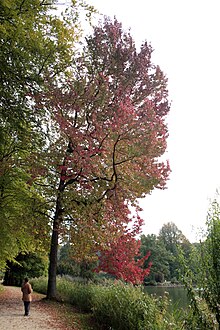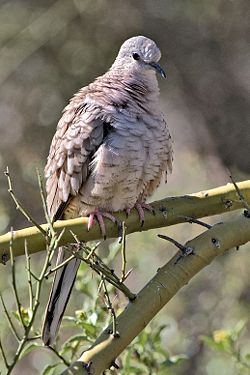
A Holiday Hummingbird!



12 12

First time I saw him was on my birthday through a piece of cold glass window.

Hi Everybody!!
I have never ever seen a hummingbird in this location in December. I saw him looking in the window on my B-day and I could not believe it! Today, I saw him again and got a couple more shots to share. You just never know what You are going to see next so keep watching! Something else to delight the eyes today is the Sweet Gum Tree. Wow-does his color really POP! Info shared from Wikipedia Pages and link to the album photostudy are located below. Last, but not least, is an old lonesome dove; an Inca Dove. Enjoy!



https://en.wikipedia.org/wiki/Liquidambar_styraciflua
Liquidambar styraciflua
From Wikipedia, the free encyclopedia
Liquidambar styraciflua, commonly called the American sweetgum, sweet-gum[1](sweet gum in the UK),[2] alligator-wood,[1] American-storax,[1] bilsted,[3] red-gum,[1] satin-walnut,[1] or star-leaved gum,[3] is a deciduous tree in the genusLiquidambar native to warm temperate areas of eastern North America and tropical montane regions of Mexico and Central America. A popular ornamental tree in temperate climates, it is recognizable by the combination of its five-pointed star-shaped leaves and its hard, spiked fruits. It is currently classified in the plant family Altingiaceae, but was formerly considered a member of the Hamamelidaceae.[4]
| Liquidambar styraciflua | |
|---|---|
 | |
| Conservation status | |
| Scientific classification | |
| Kingdom: | Plantae |
| (unranked): | Angiosperms |
| (unranked): | Eudicots |
| (unranked): | Core eudicots |
| Order: | Saxifragales |
| Family: | Altingiaceae |
| Genus: | Liquidambar |
| Species: | L. styraciflua |
Distribution[edit]
Sweetgum is one of the most common hardwoods in the southeastern United States, where it occurs naturally at low to moderate altitudes from southwestern Connecticut south to central Florida, and west to Illinois, southern Missouri, and eastern Texas, but not colder areas of Appalachia or the Midwestern states. The species also occurs in Mexico from southern Nuevo León south toChiapas, as well as in Guatemala, El Salvador, Nicaragua, and Honduras. In Mexico and Central America, it is a characteristic plant of cloud forests, growing at middle elevations in various mountainous areas where the climate is humid and more temperate.[5]
Leaves[edit]
The leaves usually have five (but sometimes three or seven) sharply pointed palmate lobes.[14] They are 3-5 inches wide on average and have three distinct bundle scars.[16]They are long and broad, with a 6–10 cm petiole. The rich dark green, smooth, shiny, star-shaped leaves generally turn brilliant orange, red, and purple colors in the autumn.[5]This autumnal coloring has been characterized as not simply a flame, but a conflagration. Its reds and yellows compare to that of the maples (Acer), and in addition it has the dark purples and smoky browns of the ash (Fraxinus).[7] However, in the northern part of its range, and where planted in yet colder areas, the leaves are often killed by frost while still green. On the other hand, in the extreme southern or tropical parts of its range, some trees are evergreen or semi-evergreen, with negligible fall color. The leaves are three to seven inches broad with glandular serrate teeth. The base is truncate or slightly heart-shaped. They come out of the bud plicate, downy, pale green, when full grown are bright green, smooth, shining above, paler beneath.[7] They contain tannin and when bruised give a resinous fragrance.[17]
While the starry five-pointed leaves of Liquidambar resemble those of some maples (Acer), Liquidambar is easily distinguished from Acer by its glossy, leathery leaves that are positioned singly (alternate), not in pairs (opposite) on the stems. Luna andPromethea moth caterpillars feed on the leaves.[9]



Link to photostudy in G+ Photo Album Gallery:
https://plus.google.com/u/0/photos/117645114459863049265/albums/5958193462651939425
Inca Dove

https://en.wikipedia.org/wiki/Inca_Dove
Inca Dove
From Wikipedia, the free encyclopedia
The Inca Dove (Columbina inca) is a small New World dove; it might belong to thegenus. It ranges from the southwestern United States and Mexico through Central America to Costa Rica; the Inca Dove only lives on the Pacific side of Central America. Despite being named after the Inca Empire, this species does not occur in any of the lands that constituted that region. Inca Doves are common to abundant within their range and they are expanding their range north and south.
Inca Doves reach a length of 16.5–23 cm (6.5–9.1 in) and weigh 30–58 g (1.1–2.0 oz).[2] They are slender, with a gray-brown body covered in feathers that resemble a scaled pattern. The tail is long and square, edged with white feathers that may flare out in flight. In flight, the underwing is reddish, like other ground doves, and on takeoff, the wings produce a distinctive, quiet rattling noise.
| Inca Dove | |
|---|---|
 | |
| Conservation status | |
| Scientific classification | |
| Kingdom: | Animalia |
| Phylum: | Chordata |
| Class: | Aves |
| Order: | Columbiformes |
| Family: | Columbidae |
| Genus: | Columbina |
| Species: | C. inca |
During winter, they roost in communal huddles in a pyramid formation that helps them conserve heat. These pyramids can contain up to 12 birds.[3]
Inca Doves live near areas of human habitation and feed in opens areas such as lawns and barnyards. They build their nests primarily in trees and shrubs. The male gathers the nesting material and presents it to the female, who also gathers some nesting material. The nest is composed of twigs, grass, and leaves and becomes reinforced with the brood's excrement.[4]


...this is brendasue signing off from Rainbow Creek. See You next time!

O+O



No comments:
Post a Comment
Hi Everybody! Please say hello and follow so I know you are here! Due to the inconsideration of people trying to put commercials on my blog comment area, I have restricted use of anonymous posts. Sorry that some hurt all.
My public email is katescabin@gmail.com No spammers or trolls